This is a drawing of the interior of Jupiter's moon Ganymede.
Click on image for full size
NASA
How do we know what the inside of a Planet or Moon is like?
You may wonder how it is that scientists know what the inside of a planet is like.
The way the mass of a body is spread inside the body affects how the body spins in space. If the body has a large core, it will spin with a certain speed, if it has no core it will spin at another rate of speed. The affect is like that of an iceskater who spins faster when her arms are close to the body than when the arms are spread apart.
By studying the rate of spin of a body, as well as determining the mass of the body, scientists can figure out if the body must have a core and how large that core must be.
The picture shown here is that of Jupiter's moon Ganymede, and illustrates that spacecraft measurements were able to determine that the moon has at least two layers inside, besides the surface crust (scientists think that there are really three layers). Scientists must still use theories to estimate exactly what the layers are made of.
You might also be interested in:
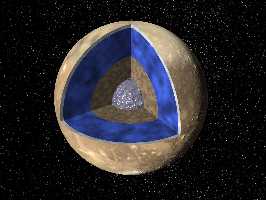
The picture on this page shows what the inside of Ganymede looks like. Scientists have made this model based on measurements by the Galileo spacecraft. The picture shows a samll core of metal (silver),
...more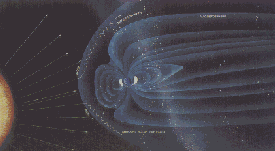
Unlike the Earth, which has a protective shield around it called the magnetosphere, the surface of the moon is not protected from the solar wind. This picture shows the magnetosphere surrounding the Earth,
...more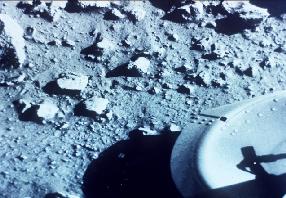
The Viking I and Viking 2 missions were to both orbit Mars and land on the planet's surface. There were two spacecraft for each mission. At this stage in the history of the exploration of Mars, scientists
...more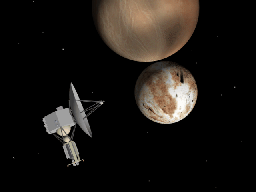
AU stands for Astronomical Units. It is an easy way to measure large distances in space. It is the distance between the Earth and the Sun, which is about 93 million miles. For really big distances, we
...more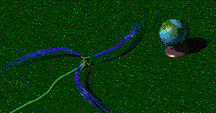
The solar wind is formed as the Sun's top layer blows off into space. It carries magnetic fields still attached to the Sun. Streams appear to flow into space as if they are spiraling out from the Sun,
...more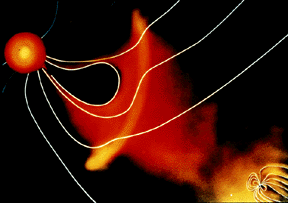
For a planet to be affected by a blob of material being ejected by the sun, the planet must be in the path of the blob, as shown in this picture. The Earth and its magnetosphere are shown in the bottom
...more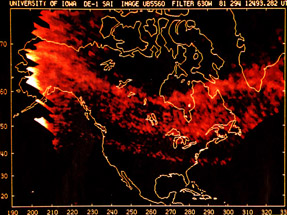
If someone says they saw an aurora, you might picture something like this. There is another type of aurora that we can't see. These aurora are called SAR arcs. The SAR stands for Stable Auroral Red. That
...more














